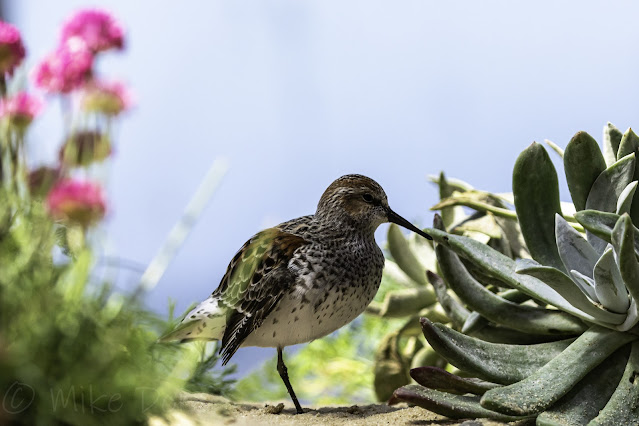The images I have for today are some really nice shots of wading birds. Living on UK's west coast with expansive beaches and mudflats I am lucky to see many different species of wading birds throughout the year, many migratory species that travel great distances and in large numbers to feed on the nutrient rich coastline, and to breed the next generation. When I see the big flocks of birds out on the shore I am conscious of the perils that they face and it is concerning to see that their numbers are in decline. It is important to preserve these wonderful birds because each individual plays an important role in the ecology of our coastline.
It was good to see that at the Monterey Bay Aquarium in California space is given over to protecting birds and educating the visitors about their life cycle and the roles they play. So below I have a few pictures of some different species, that are related to but also quite different to the species we have here in the UK.
The first bird is a Red Necked Phalarope (pics 1-3) this is a red listed species meaning it is in greatest need of conservation.
The female is somewhat unusually much more vibrantly coloured than the male and it is the female which competes for a mate and nesting sites, while the male (pic 3) is responsible for incubating the eggs and rearing of the chicks.
The next bird (pics 4, 8&9) is a Snowy Plover. It is very like and closely related to the Kentish Plover which occupies our shores but this variety is native to the Americas. I was able to get very close to this individual and it seemed to follow me as I was walking through the aviary.
Next (pic 5) is a Red Knot. I am used to seeing big flocks of Knot close to where I live and at certain times of the year on spring tides they perform wonderful aerial displays as they move closer to the shore with the incoming tide. It is a fabulous spectacle which has large numbers of twitchers down on the promenade watching on in awe. The red knot breeds in the arctic tundra and then migrates up to 15000km to its winter feeding grounds around the globe.
Pic 6&7 shows what I think is a Pectoral Sandpiper (I may be wrong) it is similar to a dunlin, although slightly larger and takes its name from the brown breastband. They do visit the UK from America and small numbers breed in the UK too.
The final image almost looks like a taxidermists model but I can assure you it was a healthy living American Avocet. It is easily recognisable as an avocet with its long legs and long upturned bill. It is different to the avocet we might be more accustomed to seeing in the UK and which is featured in the RSPB's logo, which is predominantly black and white.
The first time I ever saw an avocet was when I was in primary school in Kent, probably aged around 10 years old. One landed in the school field and stayed around for most of the afternoon. I remember that I didn't really pay much attention to my lesson that afternoon and when asked what I kept looking at I excitedly said it was an avocet. My teacher said that I wasn't to be ridiculous as there was no such thing and when I tried to insist that I was right she told me to stop arguing and to concentrate on the lesson.
As I got older I developed a somewhat rebellious streak in school and I lost some respect for the teachers. Now as I think about that moment I wonder if that was where the seed of rebellion was planted. Happily I knuckled down when it really counted and have done OK for myself but I hold onto the view that it is important to question things and not simply accept everything we are told. I remember the same teacher telling me that "lest" is not a word, despite it having been used in the library book I was reading at the time, I was so cross, perhaps I still am...
All the birds in the pictures below are declining in numbers although not all in as precarious a position as the Red Necked Phalarope; they are at risk due to loss of habitat due to climate change, rising sea levels and human interference. We all need to do what we can to reduce the risks and even simple small changes can have an impact. We have a beautiful world, it is a gift and a treasure that we should want to preserve so let's all do our part.










No comments:
Post a Comment